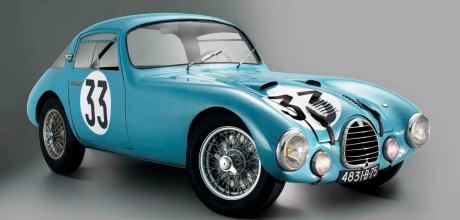Fangio’s 1950 Gordini Type 18S Berlinette Supercharged
Success may have eluded Fangio at Le Mans, but this supercharged 1950 Gordini Type 18S berlinette left a lasting impression on him and has a unique place in Gordini’s history. Words Julian Parish. Photography Christian Martin for Artcurial Motorcars.
When the Maestro met the Sorcerer
By the time Juan Manuel Fangio began his Grand Prix career, he was already of an age when most of today’s Formula 1 drivers have retired. When he began his first 24-hour race at Le Mans, on 24 June 1950, Il Maestro was celebrating his 39th birthday. His age and the legacy of childhood illness did nothing to diminish the success he would enjoy throughout the 1950s, when he won the World Drivers’ Championship an unprecedented five times between 1951-1957. Those five victories came with four different manufacturers, and Fangio had no hesitation in moving teams if he thought he would stand a better chance of winning.
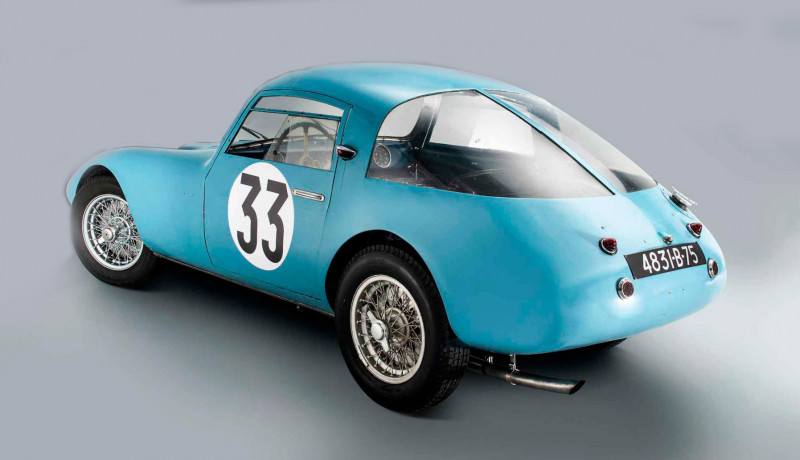
Fangio’s first Grand Prix – at Reims in 1948 – was at the wheel of a Simca Gordini 1430, but in 1950 he won at Pau driving a Maserati and at San Remo with an Alfa Romeo. For Le Mans that year he accepted an invitation from Le Sorcier, Amédée Gordini, to drive a brand-new model: the Type 18S. In his own words: ‘The engineer Gordini asked us to race with a car that was at an experimental stage. It was a 1.5-litremodelwith a supercharger. I shared the car with Froilán González without much hope of winning, although a lot can happen in such a long race. I had to go into the pits because there were problems with the engine and that cost us an hour. I went off to sleep and Froilán took over the driving. The problems continued and soon afterwards we had to retire.’
‘Gordini was responsible not only for the new cars’ engines, but also their highly original bodywork’
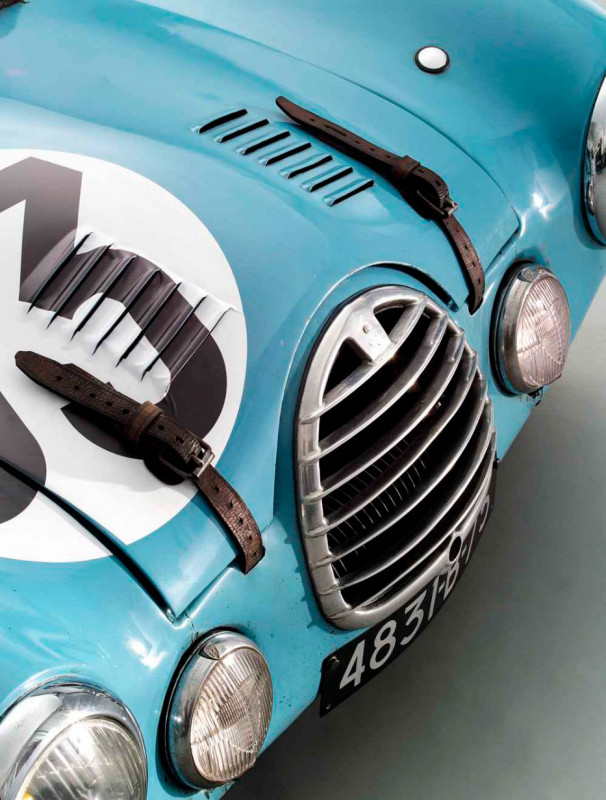
The regulations for the 1950 World Drivers’ Championship allowed naturally aspirated engines of up to 4500cc and supercharged engines of up to 1500cc. Gordini and his team in Paris duly set about designing two new engines: a 4.5-litre Type G V12 and a supercharged 1.5-litre Type 15C four-cylinder with a hemispherical aluminium head, side-mounted camshaft and dry-sump lubrication. From the start, however, things did not go well. Gordini depended on race money and on the backing of its sponsors, the most important of which was Simca. Unfortunately, Simca rejected both new engines. Five examples of the 45G V12 were eventually used by Osca, but Gordini decided to keep developing the Type 15C supercharged engine himself. Its first outing came at the Monaco Grand Prix in May 1950, when the new supercharged engine was fitted to two single-seaters driven by Maurice Trintignant and Robert Manzon. Bad luck struck early in the race, when the two Gordinis were involved in the huge accident after Nino Farina spun his Alfa Romeo on the very first lap and all seven cars behind him had to retire. Ironically, the race was won by Fangio, driving another Alfa Romeo!
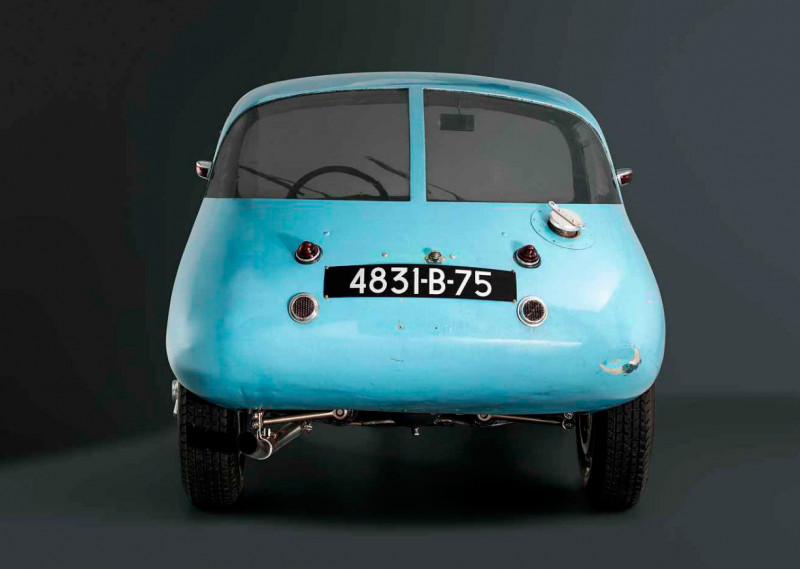
‘Fangio went on to race with other teams, but the competition career of 020S was far from over’
Its development programme may have been cut short, but Gordini’s work on the Type 15C engine did not go to waste. For Le Mans that year, he announced that two brand-new berlinettes powered by theF1supercharged engine would be entered. One would be driven by Fangio and González, the other by Trintignant and Manzon. Only two of these Type 18S Gordinis were built. the tubular chassis, numbered 020 and 021, were fitted with Type 15 Dubonnet suspension at the front and torsion bar suspension from the Type 45G and Type 16 F1 models at the rear. Their short (2.22m) wheelbase and light weight (figures quoted vary from just 450kg to 550kg) ensured they had agile handling. The Type 15C engine was fitted with a Roots-type Wade RO15 supercharger; with a 78mm bore and stroke, the engine had a capacity of 1491cc, which was rated as equivalent to a 2982cc naturally aspirated unit. In F1 specification, the engine developed close to 140bhp at 5500rpm, but for Le Mans – at which the organising Automobile Club de l’Ouest insisted that commercially available 80-octane fuel had to be used – this was reduced to 88bhp at 5250rpm, according to the Fangio Museum in Argentina.
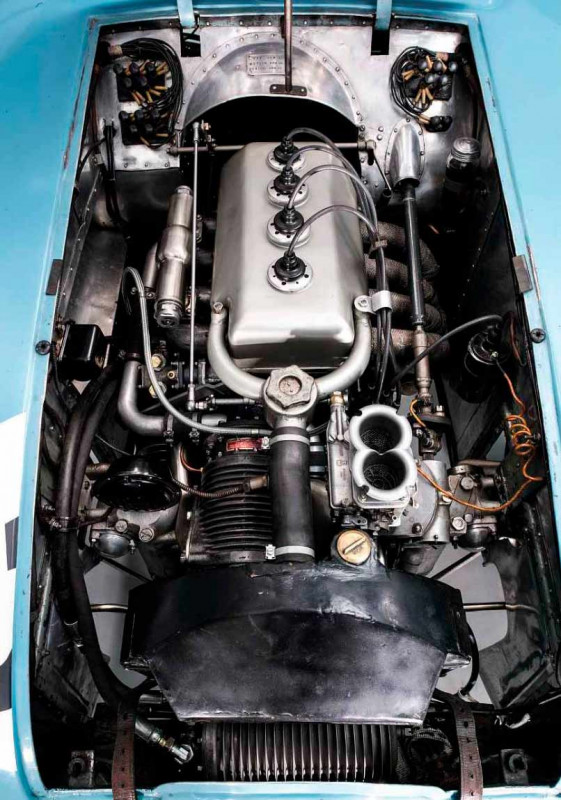
Gordini was responsible not only for the new cars’ engines but also their highly original bodywork, which was made entirely from Duralumin. Much attention was paid to aerodynamics, with a full underbody fairing and rear wheelarches integrated within the interior. Inside, the driver’s seat was positioned as close as possible to the transmission tunnel, with the routing of the oil filler pipe and location of the passenger seat adapted to suit.
For Le Mans, chassis 020S (‘S’ for Sport) was fitted with engine 16 and allocated to Fangio and González. The number 33, which can be seen on the car today, is a reminder of the Argentinians’ racing number at LeMans. Chassis 021S, meanwhile, was fitted with engine 18 and was shared by Trintignant and Manzon, with racing number 32. Curiously, although the cars used many of its components, Simca asked that neither its name nor its swallow logo appear on the two berlinettes, unlike the naturally aspirated Gordini roadsters competing.
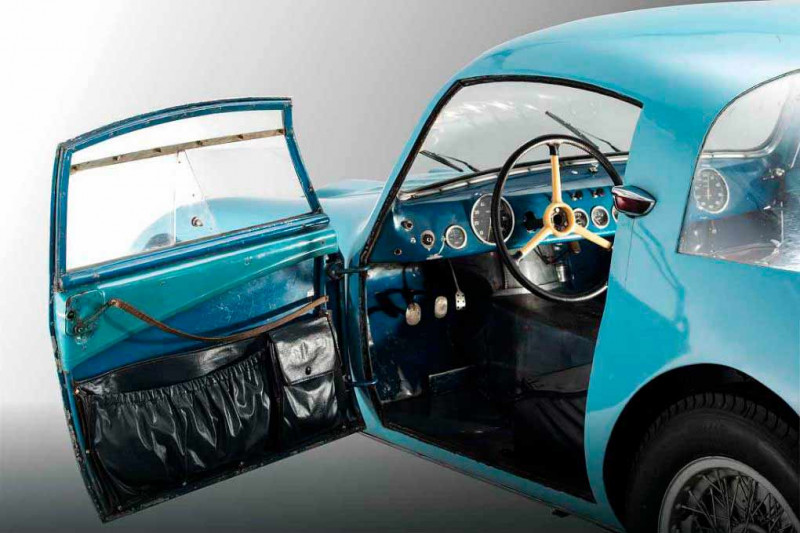
Fangio got off to a poor start, but by the fifth hour he had worked his way up to ninth. Although the Gordini was down on power against the 4.5-litre Talbot T26 GS driven by Louis Rosier and his son (who eventually won the race), the Type 18S’s excellent power-to-weight ratio helped Fangio achieve a creditable best lap speed of 144.911km/h. His good fortune would not last long: during a refuelling stop, he indicated that there was an ignition fault above 4800rpm, which was soon traced to a crack in the magneto cap. The ACO regulations required that any repairs had to be carried out using the parts and tools carried in the car, and it was only after an hour of feverish improvisation that Fangio’s mechanic, Athos Querzola, came up with a makeshift solution. Soon after 5am, however, González returned to the pits with a plume of blue smoke behind him. The exhaust valve springs had broken and a piston holed; the race was over for 020S.
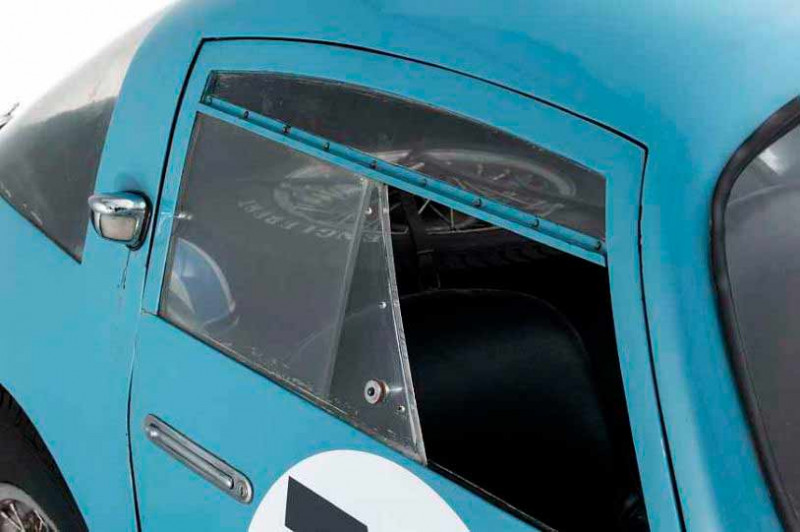
In the other supercharged berlinette, chassis 021S, Trintignant and Manzon were just as unlucky: the thermostat jammed, causing their engine to overheat and forcing them to retire after 32 laps. Indeed, not one of the six Gordini works entries made it to the finish. Yet in spite of their misfortune and his alleged aversion to racing at night, Fangio was mightily impressed by his first visit to LeMans, saying: ‘I have never seen, even in the United States, such a magnificent set-up for a motor race.’ He returned to Le Mans in 1951, 1953 and 1955, but never saw the chequered flag there.
Fangio went on to race with many other manufacturers, but the competition career of chassis 020S was far from over. Just one month after Le Mans, it was entered in the Paris 12 Hours race at Montlhéry, this time running a naturally aspirated Type 15 engine. It failed to finish, after a torsion bar broke. Undaunted, Gordini was back in 1951: both berlinettes were repainted dark blue and entered in August’s gruelling Liège-Rome-Liège rally.
For that event, chassis 020S was fitted with engine 9, a twin-overhead-cam Type 16 unit with two Solex carburettors, which produced 120bhp, as well as a Type 16 gearbox and rear axle. At this time, a number of other changes were made to the cars, some of which can still be seen today: a sliding plexiglass window was let into the right-hand door and two additional wipers fitted (one on the right and a third fixed to the left-hand side of the roof). Inside the car, a large Jaeger speedometer was added on the right-hand side of the dashboard, matching the rev-counter on the left. The fuel tank was reduced from 95 to 60 litres’ capacity, freeing up space to fit rear telescopic dampers. Jean Behra took the Gordini home to Liège in 11th place overall and fourth in the 1500cc class.
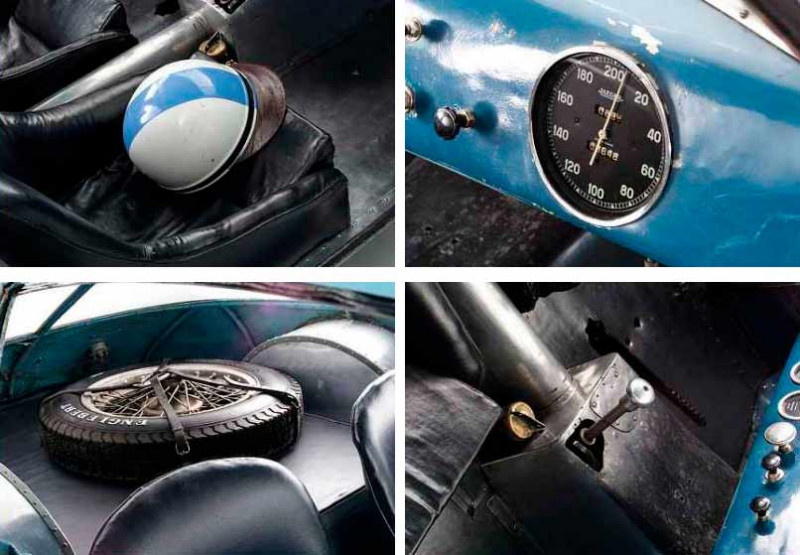
Further changes followed in 1952,when both berlinettes gained the two air intakes now visible on the bonnet of 020S, while underneath it Gordini installed a Type 18 engine (no.24) with twin overhead camshafts and two Weber sidedraught carburettors. The original 255mm drum brakes were upgraded to 280mm items. Although Behra had to retire from the Coupe du Salon at Montlhéry when he was in the lead, Trintignant won the Grands Prix at Roubaix and Agen with it. In November 1952 the car was sold to René Bourrely from Nîmes, who won numerous races and hillclimbs throughout France with it during the subsequent two seasons.
Early in 1955, Bourrely sold the car to another amateur racer, Régis Portal. His enjoyment of it came to an abrupt end after only three races, when motor racing was banned in France as a result of the terrible accident at Le Mans. While the car was forcibly laid-up, Portal had the car of blue smoke behind him. The exhaust valve springs had broken and a piston holed; the race was over for 020S.
In the other supercharged berlinette, chassis 021S, Trintignant and Manzon were just as unlucky: the thermostat jammed, causing their engine to overheat and forcing them to retire after 32 laps. Indeed, not one of the six Gordini works entries made it to the finish. Yet in spite of their misfortune and his alleged aversion to racing at night, Fangio was mightily impressed by his first visit to LeMans, saying: ‘I have never seen, even in the United States, such a magnificent set-up for a motor race.’ He returned to Le Mans in 1951, 1953 and 1955, but never saw the chequered flag there.
Fangio went on to race with many other manufacturers, but the competition career of chassis 020S was far from over. Just one month after Le Mans, it was entered in the Paris 12 Hours race at Montlhéry, this time running a naturally aspirated Type 15 engine. It failed to finish, after a torsion bar broke. Undaunted, Gordini was back in 1951: both berlinettes were repainted dark blue and entered in August’s gruelling Liège-Rome-Liège rally.
For that event, chassis 020S was fitted with engine 9, a twin-overhead-cam Type 16 unit with two Solex carburettors, which produced 120bhp, as well as a Type 16 gearbox and rear axle. At this time, a number of other changes were made to the cars, some of which can still be seen today: a sliding plexiglass window was let into the right-hand door and two additional wipers fitted (one on the right and a third fixed to the left-hand side of the roof). Inside the car, a large Jaeger speedometer was added on the right-hand side of the dashboard, matching the rev-counter on the left. The fuel tank was reduced from 95 to 60 litres’ capacity, freeing up space to fit rear telescopic dampers. Jean Behra took the Gordini home to Liège in 11th place overall and fourth in the 1500cc class.
Further changes followed in 1952,when both berlinettes gained the two air intakes now visible on the bonnet of 020S, while underneath it Gordini installed a Type 18 engine (no.24) with twin overhead camshafts and two Weber sidedraught carburettors. The original 255mm drum brakes were upgraded to 280mm items. Although Behra had to retire from the Coupe du Salon at Montlhéry when he was in the lead, Trintignant won the Grands Prix at Roubaix and Agen with it. In November 1952 the car was sold to René Bourrely from Nîmes, who won numerous races and hillclimbs throughout France with it during the subsequent two seasons.
Early in 1955, Bourrely sold the car to another amateur racer, Régis Portal.His enjoyment of it came to an abrupt end after only three races, when motor racing was banned in France as a result of the terrible accident at Le Mans. While the car was forcibly laid-up, Portal had the car overhauled and repainted (again), before selling it to Francis Mortarini, proprietor of the Parisian garage ‘Le Pur Sang’ in 1957.Mortarini in turn replaced the 280mm drum brakes, Borrani wheels and Rudge hubs with 250mm drums and Robergel wheels. In March 1958 José Piger from Le Puy-en-Velay became the Gordini’s last owner to take it racing: he competed with it in various hillclimbs in 1958 before, like Fangio himself, it retired that summer from competition.
Over the next 30 years, the Gordini changed hands a number of times. Back in Argentina, however, it seemed that Fangio had never forgotten the car he drove in his first race at Le Mans. In his hometown of Balcarce, he helped establish a museum dedicated to his career in motorsport and reunited many of the cars he had driven in period. The museum opened in 1986 and in August 1990 Fangio acquired the Gordini. Layers of later paint were stripped back to reveal its 1956 finish and the Gordini went on display at the museum. It was also shown at the Palais de Glace in Buenos Aires in 1991 as part of a major exhibition marking Fangio’s 80th birthday.
Alas, the ill fortune that seems to have jinxed the car throughout its career struck one more time. Problems arose with its customs papers and the Gordini had to be re-exported, to Fangio’s nephew by marriage in Turin. It was then sold to a specialist in Lausanne, who bought the only existing supercharged engine left in working order to install in it. Engine 03, supplied by the renowned marque historian Christian Huet, was a Type 16 unit from 1951 with twin gear-driven overhead camshafts, an alloy block, magnesium crankcase and dry-sump lubrication.
During the 2000s, the Gordini changed hands in Europe several more times, but by the end of the decade it had been acquired by none other than Huet himself. With the utmost respect for originality, he refitted authentic 280mm drum brakes from 1952, Rudge 42 hubs and 204mm front springs. The paintwork was painstakingly conserved to leave only that from1956 and, in places, from1950 and 1951. To this day, the car retains its original glass and plexiglass windows, underbody fairing and Duralumin body panels. Sit in it and you are on the same upholstery that held Fangio in place. The other Gordini berlinette to have been fitted with a supercharged engine (chassis 021S) was damaged in an accident and re-bodied in a different style. This Type 18S truly has a unique place in history.
THANKS TO the Museo Fangio and Artcurial Motorcars, which will be selling the car at auction in Paris on 18-20 March, artcurial.com.
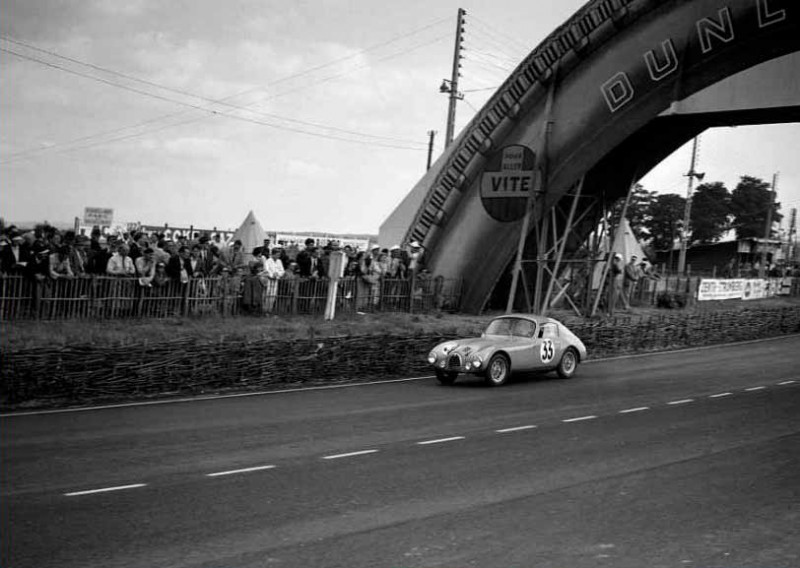
Above Gordini developed his own supercharged twin-cam 1.5-litre four-cylinder engine for Formula 1, capable of 140bhp, though detuned for this Le Mans application.
Left Only two Type 18S berlinettes were built, this one for use by Fangio and González, its sister car for Trintignant and Manzon.
Top, above and facing page Fangio in action at Le Mans, 1950; simple interior as sat in by the man himself; wonderfully patinated bodywork is as it was in 1956.


